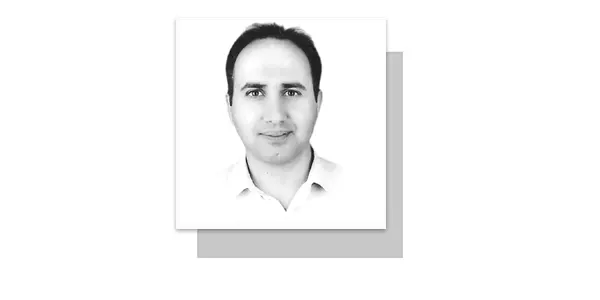NESTLED in the heart of Pakistan, Islamabad stands as a testament to the fusion of exquisite and modernity. Established in the early 1960s to replace Karachi as the country’s capital, it was conceived as a symbol of a new, progressive Pakistan, free from colonial legacies. Designed by Greek architect, Constantinos Apostolou, the city was envisioned as a neutral place, where individuals from all regions of Pakistan could unite to forge a common future. What began as a small, meticulously planned settlement with a population of just a hundred thousand has blossomed into a thriving metropolis of over a million. Today Islamabad’s diverse population includes people from Punjab, Sindh, Balochistan, Khyber Pakhtunkhwa, Azad Kashmir, Gilgit-Baltistan and even neighbouring Afghanistan, reflecting Pakistan’s rich mosaic of cultures and identities.
As Islamabad has grown, so too has its fabric, woven from the myriads of communities that have made the city their home. Over the years, people from all corners of Pakistan and beyond, have migrated to the capital in search of better opportunities in work, education and living standards. This convergence of diverse backgrounds and experiences has contributed to the city’s thriving sectors, healthcare, security, retail and transportation. It is a testament to the shared human aspiration for progress, a desire to contribute meaningfully to the collective whole. In this way, the diversity within Islamabad not only strengthens the city but also deepens its character, reflecting the very essence of what the city was always meant to be, a symbol of unity, growth and a harmonious blend of cultures.
Far from being seen as a negative or divisive development, Islamabad has embraced the newcomers with open arms. The populace, in turn, have integrated seamlessly into the city’s social and economic life. From top bureaucrats, judges, engineers and doctors to nurses working in hospitals and street vendors selling fruits and vegetables, people from all ethnicities, Pashtuns, Punjabis, Sindhis, Baloch and others, have made invaluable contributions to the capital’s growth and prosperity. Each community, through its hard work and dedication, has played a vital role in shaping Islamabad into the booming, diverse city it is today.
This symbiotic relationship between Islamabad and its residents is a reflection of the harmonious coexistence that characterizes the city. For Islamabad, the growing influx of residents from all corners of Pakistan represents a chance for deeper integration and enrichment, rather than fragmentation. Each new community that calls the city home adds to its multiplicity, weaving threads of varied experiences and perspectives into the structure of its collective identity. This diversity is not a challenge, but a wellspring of strength, nurturing a common insight of purpose and progress. There has been no unrest or violence between any of the communities. People from all walks of life have peacefully coexisted and the government and civil society have worked together to ensure that Islamabad remains a symbol of national unity.
Nevertheless, recent political developments have attempted to shift the narrative in a disruptive direction. A protest in Islamabad on November 24, initially called for political change, quickly became marred by ethnic rhetoric. Organizers, after falsely claiming workers deaths, accused the police of targeting Pashtuns, a claim that was proven untrue, as the law enforced justice against the perpetrators of the riots, irrespective of their ethnicity or region of origin. Such contentious propaganda is not only unfounded but also deeply harmful, as it fuels unnecessary ethnic tensions and undermines social cohesion. It is crucial for the people of Islamabad and Pakistan at large to reject these attempts to manipulate ethnic divides for political gain. The government must adopt a proactive approach to combat the divisive rhetoric that seeks to undermine Pakistan’s unity. Legal measures should be swiftly implemented against those who incite ethnic hatred and violence, ensuring that the rule of law prevails. Public campaigns promoting unity, respect and understanding across diverse communities are essential. The political and administrative heart of the nation, Islamabad, must stand as a beacon of this message, reminding all citizens that we are not separate ethnic groups, but one nation united in its diversity.
Islamabad itself epitomizes the promise of Pakistan, a modern, dynamic and forward-looking city that reflects the country’s potential for unity and progress. The city’s inclusive spirit towards its every resident should serve as a model for the entire nation. Rather than succumbing to the forces of division, Pakistan must strive to cultivate a future in which all its communities, regardless of their ethnic backgrounds, can coexist harmoniously, contributing to the prosperity of the nation. The actions of a few individuals who seek to sow discord should not define the future of the capital city or Pakistan.
In a world that often gravitates toward division, we must remember that the true strength of a nation lies in its ability to unite in the face of adversity. Unity, built on mutual respect and understanding, is not just the foundation of a peaceful society but the pathway to its lasting greatness. Let us forge ahead, not as fragmented groups, but as a united people, embracing our diversity and working together for the common good. For in unity, we find our true potential, not just as a nation, but as a reflection of the shared ideals that bind us all. The beauty of a nation lies not in its homogeneity, but in its ability to harmonize its differences. As Pakistan continues to evolve, its strength will lie in its unwavering commitment to unity, diversity and the shared ideals of justice and peace.
—The writer is PhD in Political Science and visiting faculty member at QAU Islamabad.
(zafarkhansafdar@yahoo.com)










